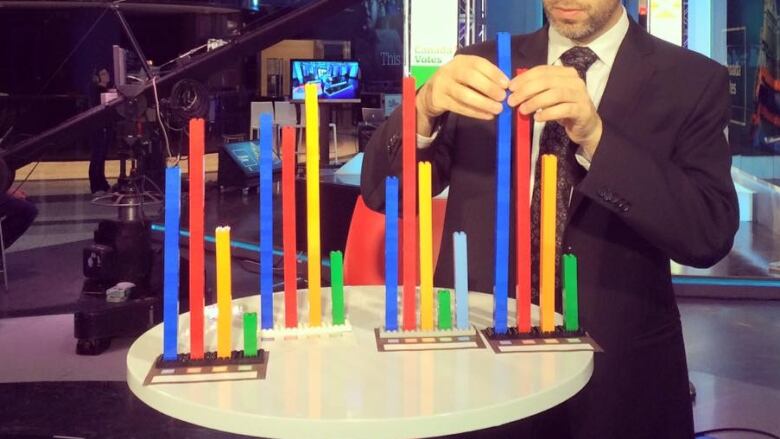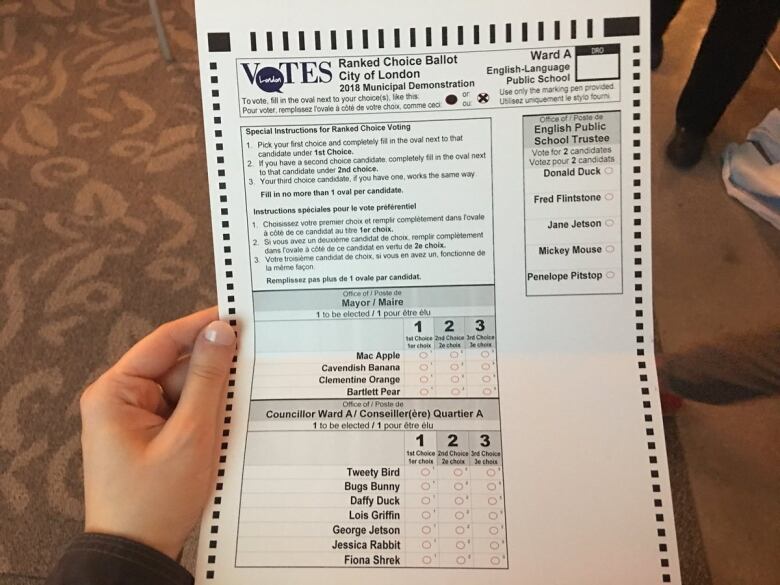Liberals broke their promise. But where do other parties stand on electoral reform?
NDP, Green Party platforms outline reform promises

As you send us your election questions, we've been hearing a lotabout electoral reform. It was a central pillar of the Liberals' 2015 promises, but was ultimately abandoned.
Not much has been said this campaign, but that doesn't mean the parties don't have views on it.
What did the Liberals promise before? Where do they stand now?
During the 2015 election, Liberal leader Justin Trudeau campaigned on it being the last run under the first-past-the-post system. He promised an "electoral system that does a better job of reflecting the concerns, the voices of Canadians from coast to coast to coast, and give us a better level of governance." While running for Liberal leadership in 2013, he said he preferred preferential voting.
- Got questions about the election? We've got the information you need. Text "ELECTION" to 22222 for our election toolkit. And if you've still got questions, ask us.
The Liberalsundertook extensive consultation, including convening a multi-party House committee, where the majority of members recommendeda referendum on a form of proportional representation.
But Trudeauultimately cancelled his electoral reform promisein early 2017, saying no clear choice had emerged for an alternative system to calls of "betrayal" from his opponents. Trudeau also ruled out a referendum.
He said he may be open to models other than proportional representation but said any further move won't happen until after this election. There is nothing about electoral reform in theLiberals'2019 platform.
What do the other parties want?
Conservatives are open to electoral reform, but insista referendum must come first they say it's their "bottom line"requirement. The party does not favour any type of system in particular.
The NDPpropose a mixed member proportional representation system in place by the next election. After an election is held under this system, they would then hold a referendum to see if Canadians want it to stay. The party would also lower the voting age to 16.
The Greens also want electoral reformbut propose launching a "citizens assembly" to find an appropriate alternative to the current model. The partywould put any new system in place by the next election.Ittoo would lower the voting age to 16.
The Bloc also got a seat on the aforementionedHouse committee, where theyadvocated for a referendum.
And the People's Party said itdoesn't have any position on electoral reform.
Why do some parties want electoral reform?
It's pretty clear why for smaller parties like the Greens different voting systemswould mean more seatsin the House of Commons. The Greens got3.4 per cent of the votecountrywide in 2015 but that onlytranslated to one seat.
Under alternative methods, the number of seats won would more closely reflecttheoverall percentage of votes received. The Greens have never come close to matching their vote share with seat share.
Parties also complain that under the current model, a party canwin a majority government with a minority of the votes(the Liberals won a majority in 2015 with just 39.5 per cent of the votecountrywide) and that this discourages people from thinking their vote counts. They feel reform would allow a wider range of voices to be heard.

What is a mixed-member proportional system?
This is the only system that's specifically being proposedby a party the NDP. The method is currently used in New Zealand. It would mean electors would cast two votes one for their local candidate and the other for a party, also known as a regional candidate.
The local candidate would be chosen just like they are right now. But the vote for the party or regional candidate would be used to top up representation in the House. This would help accurately align seat count with popular vote. That meansif a party got 10 per cent of the votes nationally, it would get 10 per cent of the seats in the House.
Where do we vote differently?
While federal elections in Canada usethe first-past-the-post system, there have been examples ofalternative voting systems used in provincial and municipal elections.
Preferential voting (also known as a ranked ballot) was used in elections in British Columbia, Alberta and Manitobain the past but the provincesstopped in the mid-1950s.
London, Ont., voted in the 2018 municipal election using a ranked ballot. Ontario changed the rules in 2016 to allow municipalities to vote by ranking their ballot if they wished.
These types ofballots have also been used to choose leaders during party leadership elections.

What do referendums look like?
Severalprovinces and municipalitieshave held referendums on changing how we vote but not many have resulted in change.
Recent provincial examples include April's referendum on Prince Edward Island, where the province voted tokeepfirst-past-the-postand British Columbia's 2018 referendum, where voters rejected reform for the third time in 13 years, despite campaigning from Premier John Horgan.
Quebec is proposing itsown referendum on electoral reform to coincide with its provincialelection in 2022.
Kingston, Ont., held a vote during its2018 municipal election to implement a ranked ballot.While 62.9 per cent of electors voted in favour,less than 50 per cent of eligible electors voted, so it wasn't considered binding. Council decided to honour the results of referendum anyhow. The city will vote by ranked ballot in 2022.
How much would a referendumcost?
In 2016,Marc Mayrand, Election Canada's thenchief electoral officer, estimated a referendum would cost about $300 million.
Money would be saved if it was held in tandem with a general election but that can't happen under current Referendum Act rules.
Until election day, we'rerounding up your questions and answeringsome in articles like the one you just read. If you've got questions, send Haydn an email athaydn.watters@cbc.ca. He'll try his very best to get you an answer or include it in a future article.














_(720p).jpg)


 OFFICIAL HD MUSIC VIDEO.jpg)
.jpg)



























































































